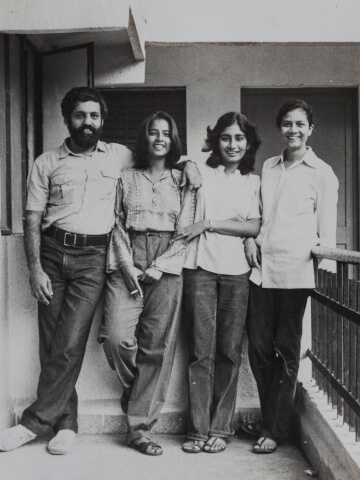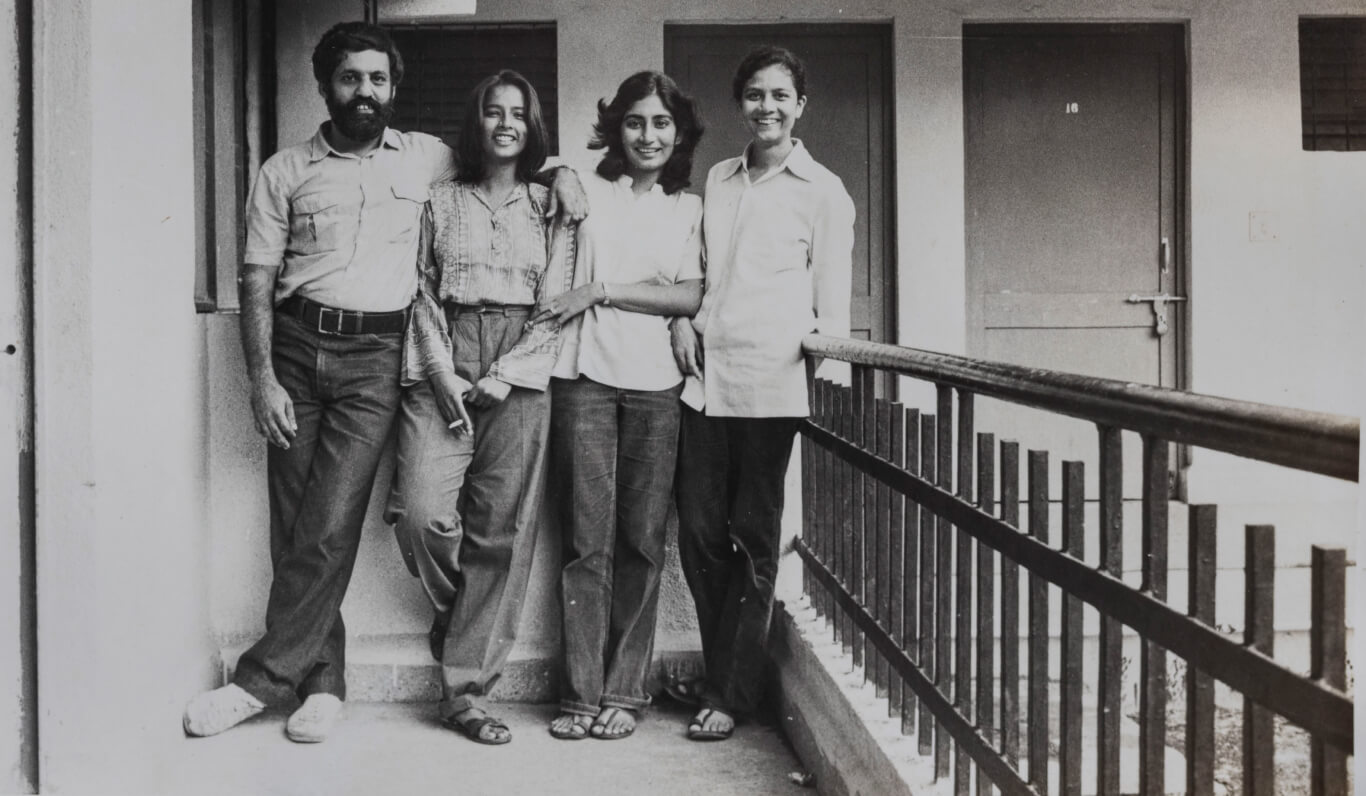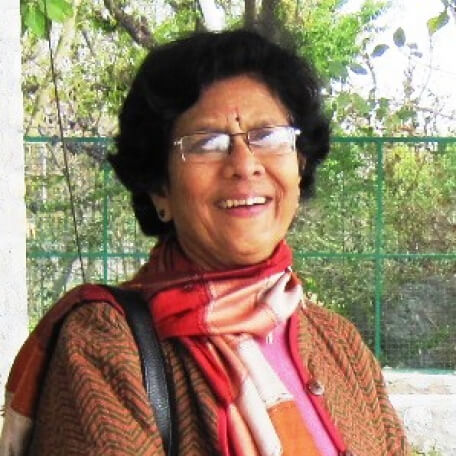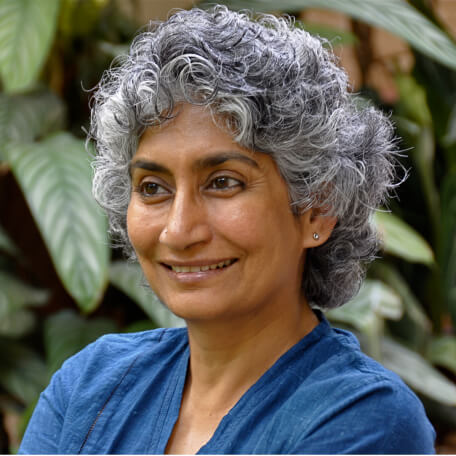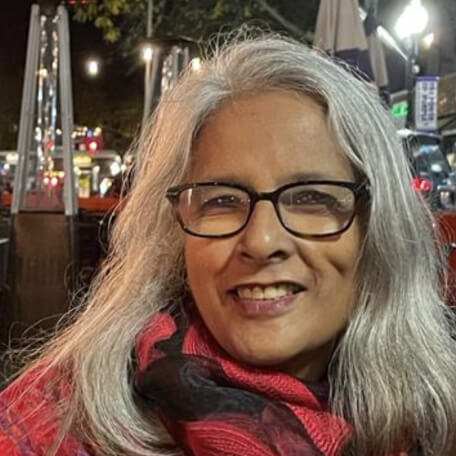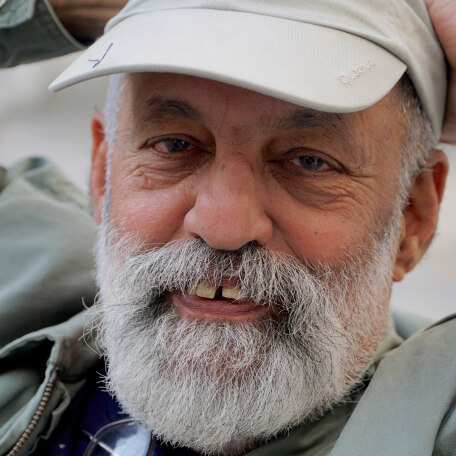YUGANTAR WAS INDIA’S FIRST feminist film collective. Founded by Deepa Dhanraj, Abha Baiya, Navroze Contractor and Meera Rao in 1980 the collective developed four films together with existing or ensuing women’s groups: with domestic workers in Pune (Molkarin, 1981), female factory workers in Nipani (Tambaku Chaakila Oob Aali / Tobacco Embers, 1982), with Stree Shakhti Sanghatana, a feminist research and activist collective in Hyderabad (Idi Katha Maatramena / is this just a story?, 1983) and with members of the Chipko environmental movement (Sudesha, 1983).
The revolutionary energy on university campuses at the time, civil liberty and radical left movements, land right struggles and an overall sense of possibilities and burst of creative activism that came with the emergence of the autonomous women’s movement during the post-Emergency period sparked the foundation of the collective in 1979/80. The collective’s name carrying the air of radical historical transformation – Yugantar/ Change to a New Era.
Yugantar’s film works are also amongst the pioneers of state independent documentary filmmaking in India that established itself increasingly during the 1980s and 90s and thus need to be addressed as part of a nascent movement of independent political documentary in India. The acknowledgment of Yugantar’s work is vital in order to stress the undisputable importance of women filmmaker’s particular approach and the impact of feminist discourse on innovations in documentary practices and aesthetics within the Indian context and beyond.
Today we might view Yugantar’s films as living and continuously reactivated documents, as part of a continuously metabolising feminist archive that takes its place in the Now and in the future.
Members
Abha Bhaiya, Deepa Dhanraj and Meera Rao were driven by the impetus to contribute to feminist movement-building at the time. They also understood that in particular working class women’s crucial participation and leadership in struggles was often invisible and not being documented. The creation of a public memory of women’s courage, strategising, asking new questions and creating new political vocabularies and practices, crucial for movement building, needed diverse platforms. In line with the spirit of inclusivity at the time while acknowledging the challenges of continuously re/creating solidarities and ‘political trust’ across class and caste differences, Yugantar embarked on pioneering collective filmmaking practices that became important learning and political pedagogical moments for everyone involved.
Navroze Contractor was formally trained as cameraperson from The Film and Television Institute of India (Pune), Deepa Dhanraj had been an apprentice with fiction filmmakers but none of the members had formal film training. At the same time the independent documentary film movement in India was nascent and still small and the Yugantar collective produced their films outside of set parameters and defined modes of documentary filmmaking. Each film was made collectively, before ‘participatory video work’ or community media became buzzwords during the 1990s. Through collaborative processes with an existing or an emerging political constituency that was exemplary in its activism at the time, each film took on a different form and shaped distinct forms of collaborations, depending on the political queries and the group formations Yugantar worked with. The films are thus unique documentations of the history of women’s struggles and women’s crucial role in movement building, through autonomous groups and within labour and unionising processes. They contributed to the complexity of the domestic violence debate and documented one of the crucial environmental movements that impacted eco-feminism across the world.
Their rich synergies between political and filmmaking practices mark Yugantar’s films as a potent legacy of feminist and collective filmmaking and inspire reflections on political friendship and imagining new modes of co-existence today.
Between 1980-1985 all Yugantar films and their different language versions were shown extensively throughout India. The 16mm film copies and projectors were carried on top of buses. Unions, women’s and other social and political organisations arranged screenings that sparked energising debates and supported further organising, with and without members of the collective. The film prints attained lives on their own.
Yugantar discontinued to make films together as a collective, though was not formally disbanded. Deepa Dhanraj and Navroze Contractor continued to work together for many films. Their next film Kya Hua is Shahar Ko (D: Dhanraj, 1986) was developed in collaboration with Hyderabad Ekta (an activist forum for secular intervention against sectarianism) and later also restored by Arsenal – Institute of Film and Video Art. Abha Baiya and Deepa Dhanraj worked together on Something Like a War (D: Dhanraj, 1991) and The Legacy of Malthus (D: Dhanraj, 1994).
Yugantar’s membership changed and from 2005 the work of Yugantar evolved and moved into the implementation of development projects in both rural and urban settings. It now focuses on working with marginalized communities to improve their access to resources by addressing issues of gender, urbanisation and governance. To know more about Yugantar’s current work and team please visit here.
Film Technology
As Contractor had worked with new cameras in the US, the National Film Development Corporation (NFDC) employed him to demonstrate the ARIIFLEX 16SR after it had been newly imported and subsequently rented them to Yugantar after. Lenses they used were Angenioux 12-120 F2.2 zoom lenses and for Idhi Katha Matramena Arri Prime lenses 12mm, 16mm and 25mm, all T1.3. Ordinary 100 watt bulbs were used for good exposure but four 1000 watt sun guns were used to not disturb the ambiance and only for the large meetings filmed for Molkarin and so as not to disturb the ambiance they used four 1000 watt sun guns. The recorders were NAGRA for Molkarin and later NAGRAS; the boom microphone was Sennheisser 816. All three films were shot on ORWO (East European) B&W negative film, at the time subsidized as part of socialist state friendships. Only 15 rolls of 400ft (10 minutes) of picture film stock were available for each film. The sound rolls were Indu, an Indian company which cut bulk rolls from the Czech Republic into smaller rolls and sold them in India, standard normal for the time.
For Sudesha the producers supplied a French made Aclair ACL. Sudesha was the first of the Yugantar films in color, shot on Eastman Kodak ISO100 and ISO320. A few rolls that were shot indoors in village houses and night scenes needed to be boosted from ISO320 to 500. The film rolls were processed in Munich, Germany. (Contractor, email conversation with Nicole Wolf, March 2018 and January 2022)

